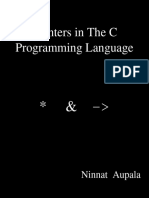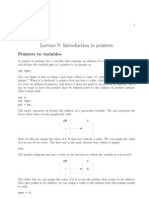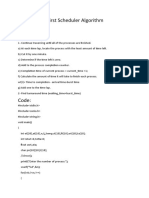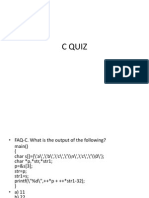0% found this document useful (0 votes)
30 views35 pages9 Assignment and Pointer Semantics
The document discusses assignment and pointer semantics in programming, focusing on copy and reference semantics, as well as the distinction between l-values and r-values. It explains how pointers work in C, including memory allocation with malloc() and deallocation with free(), and provides examples of pointer usage and structure representation. Additionally, it covers the concept of aliases in programming, where multiple expressions can refer to the same memory location.
Uploaded by
mimk00196Copyright
© © All Rights Reserved
We take content rights seriously. If you suspect this is your content, claim it here.
Available Formats
Download as PDF, TXT or read online on Scribd
0% found this document useful (0 votes)
30 views35 pages9 Assignment and Pointer Semantics
The document discusses assignment and pointer semantics in programming, focusing on copy and reference semantics, as well as the distinction between l-values and r-values. It explains how pointers work in C, including memory allocation with malloc() and deallocation with free(), and provides examples of pointer usage and structure representation. Additionally, it covers the concept of aliases in programming, where multiple expressions can refer to the same memory location.
Uploaded by
mimk00196Copyright
© © All Rights Reserved
We take content rights seriously. If you suspect this is your content, claim it here.
Available Formats
Download as PDF, TXT or read online on Scribd
/ 35

























































































